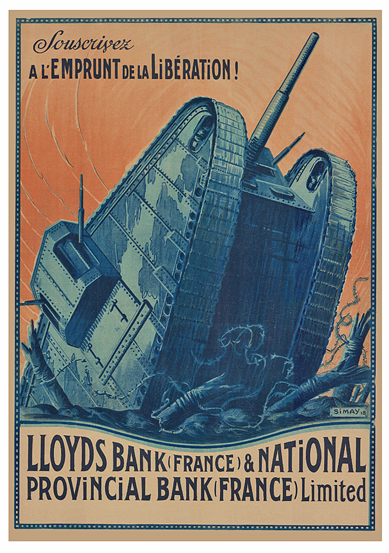Above Simay Imre, Subscribe to the Liberty Loan (World War I French poster), 1918. University of Illinois Archives, Public Domain.
•••
Wylie Sypher, Rococo to Cubism in Art and Literature. New York: Vintage Books, 1960—
To prove that art and life intersect, that thought enters things, that appearance and reality collide, or coincide, at the points we call objects, the cubist relied on certain technical devices: a breaking of contours, the passage, so that a form merges with the space about it or with other forms; planes or tones that bleed into other planes and tones; outlines that coincide with other outlines, then suddenly reappear in new relations; surfaces that simultaneously recede and advance in relation to other surfaces; parts of objects shifted away, displaced, or changed in tone until forms disappear behind themselves. This deliberate “oscillation of appearances” gives cubist art its high “iridescence” [p. 270].
It has been said that the great cubist achievement was camouflage [p. 299].
RELATED LINKS
